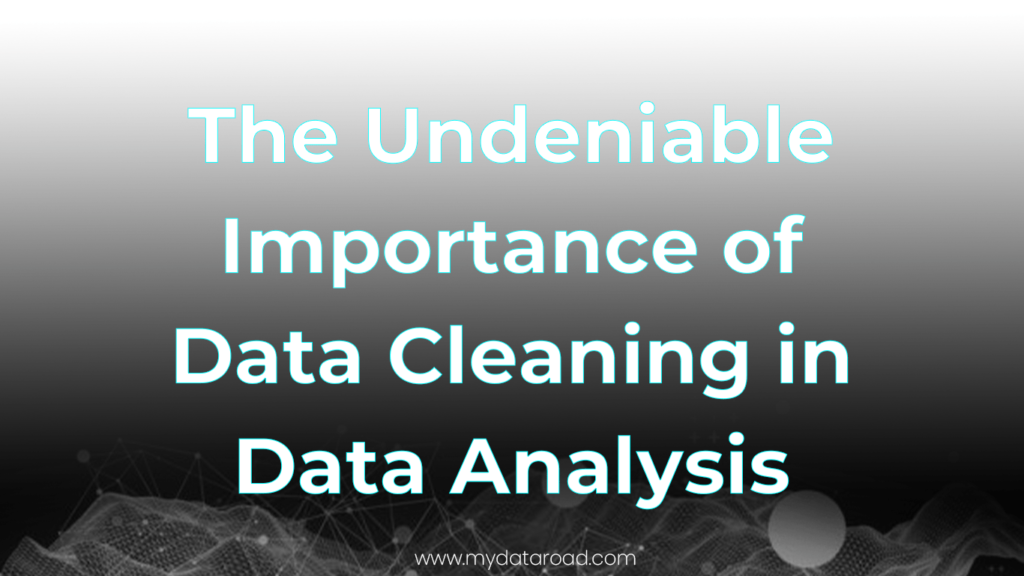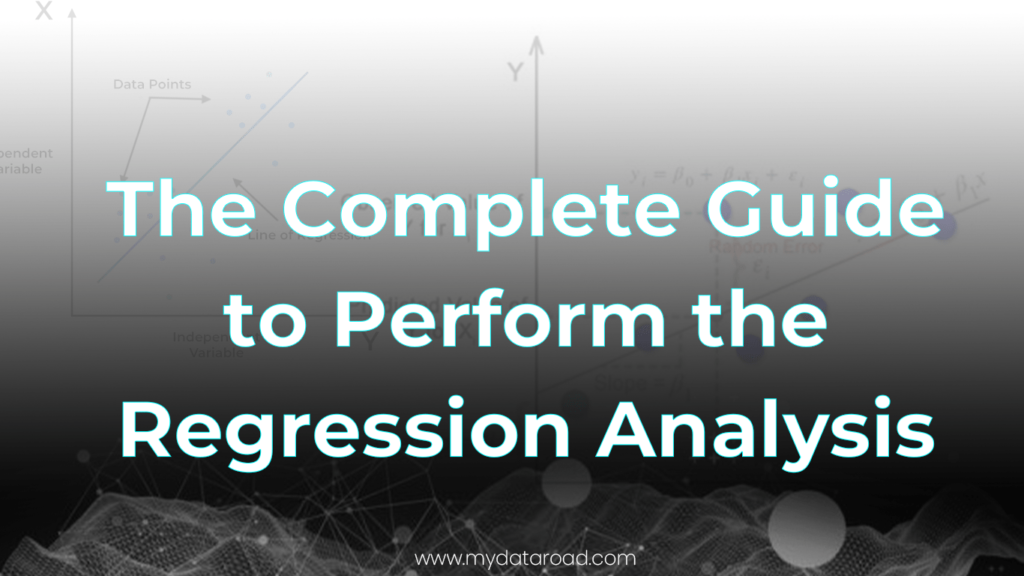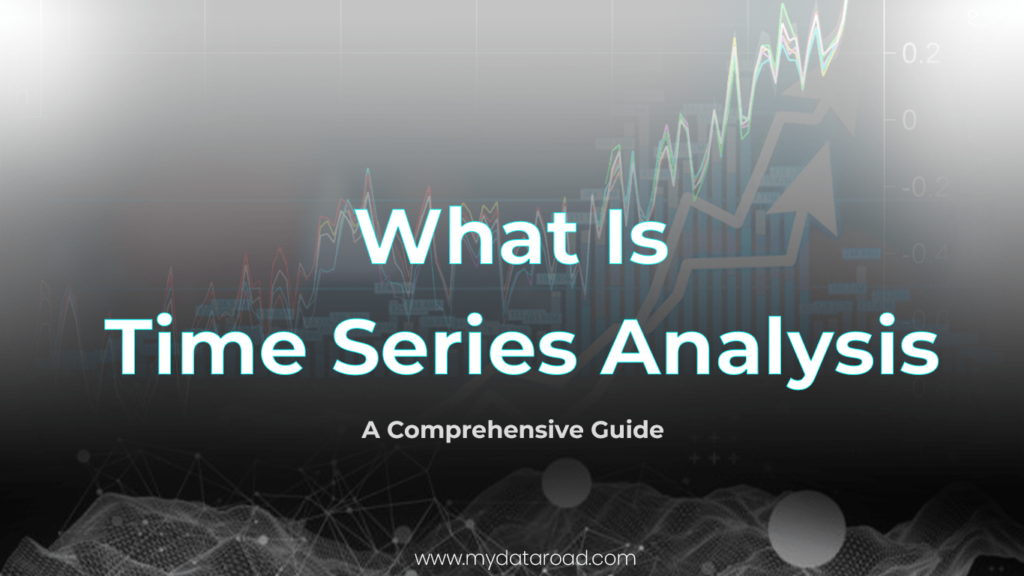The Undeniable Importance of Data Cleaning in Data Analysis
As the saying goes, “Garbage in, garbage out.” This aphorism perfectly sums up the relevance of data cleaning in the realm of data analysis. In fact, one could argue that effective data cleaning is not just fundamental, but indeed, the cornerstone of any successful data analysis operation.
The Gateway to Accurate Insights
Picture this: you’re an eager data analyst, ready to delve into the ocean of data you have at your disposal. But if the data you’re starting with is murky, cluttered with errors or inconsistencies, your insights and predictions will reflect that disorder. The process of data cleaning, therefore, is akin to fine-tuning an instrument before a concert. Only by ensuring that the data is harmonious and error-free can you craft a masterpiece of analysis.
Consider your journey in data analysis as a road trip on the Data Road. To reach your destination— valuable insights— you must first ensure that your vehicle (data) is in good condition. If your car is full of unnecessary items, or if your navigation system (data set) is not accurate, your journey might not end well. Data cleaning, therefore, is like servicing your car before the journey or updating your navigation system.
Understanding the Nitty-Gritty of Data Cleaning
But what exactly does data cleaning entail? To put it simply, it involves combing through your data to identify and rectify errors, deal with missing values, and eliminate irrelevant information. It is a meticulous and often challenging process but is crucial for accurate, dependable results.
The Complete Guide to Perform the Regression Analysis showcases how the accuracy of your regression model greatly depends on clean, well-prepared data. When the data is dirty or poorly organized, your model may misinterpret the underlying relationships and correlations, leading to false predictions.
On the same note, if you’re using techniques such as cluster analysis, as detailed in our step-by-step guide, the importance of clean data becomes even more evident. Without it, you’re likely to end up with clusters that don’t accurately represent the structure and relationships within your data, thereby rendering your analysis ineffective.
“Data cleaning might not be the most glamorous part of data analysis, but it certainly is one of the most important.”
The Human Touch in Data Cleaning
Despite the rise of automated tools, there’s still a strong case for the human touch in data cleaning. As we discuss in our blog post, 10 ways ChatGPT can streamline your data analysis process, while AI can assist in many areas of data analysis, human judgment is often crucial in determining what constitutes an error or outlier in the context of the data set.
As the initial phase of the data analysis process, data cleaning sets the stage for all the steps that follow. Only when the stage is set right can the performance be top-notch. Therefore, make sure to invest ample time and effort in this crucial stage to ensure the success of your data analysis journey. Stay tuned for more in the next part of this article where we’ll dive deeper into the practical aspects of data cleaning.
Data Cleaning: More Than Just a Chore
While data cleaning might seem like a tedious chore, the truth is that it’s an opportunity for data analysts to familiarize themselves with the dataset in question. This deep dive can lead to a better understanding of the data’s nuances and potential issues that might arise later in the data analysis process.
In our guide to exploratory data analysis, we discuss how data cleaning forms an integral part of the exploration process. By scrutinizing the data during cleaning, you begin to observe patterns, anomalies, and trends that can prove invaluable during analysis.
The Role of Technology in Data Cleaning
Despite the need for a human touch, leveraging technology to streamline the data-cleaning process can significantly enhance efficiency and accuracy. There’s a vast array of tools and libraries available for this purpose, and their application can turn the daunting task of data cleaning into a manageable one.
For instance, our article on the 15 most useful Excel functions for data analysis underlines how Excel, a tool many of us are familiar with, can be a powerful ally in your data-cleaning efforts. From identifying and removing duplicates to dealing with missing data, Excel’s functionalities can tackle a myriad of common data-cleaning challenges.
Python, too, is a game-changer when it comes to data cleaning. As discussed in our compilation of 37 libraries of Python to master data science, libraries like Pandas and NumPy offer a wealth of functions designed to clean and preprocess data effectively. Our comprehensive guide on NumPy for data analysis can offer further insights into this powerful tool.
The Consequences of Ignoring Data Cleaning
While the value of data cleaning is clear, what are the repercussions of ignoring this vital step? For one, your findings may be unreliable or outright incorrect.
Imagine presenting an important data-driven report, only to later discover that the conclusions were based on unclean data. Such a scenario could not only be embarrassing but also costly in terms of time, resources, and potential decision-making consequences.
“A house built on a weak foundation cannot stand. Similarly, an analysis built on unclean data is bound to crumble.”
Taking Data Cleaning to the Next Level
It’s not enough to clean your data just once. As new data gets added, it’s important to periodically repeat the cleaning process to ensure that your analysis remains accurate and relevant.
Data cleaning is no longer an option but a necessity in today’s data-driven world. In our next segment, we will further delve into the practical aspects of data cleaning, highlighting effective strategies and common pitfalls to avoid. So stay tuned and continue on this journey with us on the Data Road.
Strategies for Effective Data Cleaning
As you embark on your data-cleaning journey, there are several strategies that can guide your process. One of the most critical steps is to define what clean data means for your specific use case. Depending on the nature of your analysis, different data quality dimensions such as accuracy, completeness, consistency, and relevancy will be more important than others.
When in doubt, remember to refer to our step-by-step guide to cluster analysis, which emphasizes the need for clean and high-quality data. Using techniques like cluster analysis can be severely affected if the input data is inconsistent or missing critical information.
Another helpful strategy is to automate as much of the data cleaning process as possible. For instance, ChatGPT, a powerful AI language model, can be used to create scripts that automate routine data cleaning tasks, making the process more efficient and less prone to human error. Check out our specific ChatGPT prompts to analyze data in minutes for some practical ways to use this tool.
Avoiding Common Pitfalls in Data Cleaning
Data cleaning is an art, and like any art, it’s easy to fall into some common traps. One such pitfall is treating all missing data in the same manner. The truth is, different types of missing data require different handling techniques.
While some instances of missing data can be resolved by simple imputation, other cases might require more sophisticated techniques or even necessitate a reassessment of your data collection methods. Our complete guide to performing regression analysis offers useful insights into dealing with missing data effectively.
The Importance of Data Cleaning FAQs
1. Is data cleaning a mandatory step in data analysis?
Yes. Data cleaning is crucial in any data analysis process. Without it, the results of your analysis can be skewed, misleading, or even entirely inaccurate.
2. What’s the first step in the data cleaning process?
The first step is to assess the data quality by identifying any issues such as missing values, inconsistencies, and inaccuracies. This process will guide you in determining the appropriate cleaning techniques to apply.
3. Can I use automation tools for data cleaning?
Yes. Automation tools like ChatGPT can be used to streamline the data cleaning process, reducing human error and increasing efficiency.
4. Can missing data be ignored during the data cleaning process?
No. Ignoring missing data can significantly affect the outcome of your data analysis. Depending on the nature of the missing data, various techniques such as simple imputation or advanced methods can be used to address this issue.
5. What should I do if I find inconsistencies in my dataset?
Inconsistencies should be resolved by determining their root cause. They can result from data entry errors, system glitches, or even inconsistent data collection methods.
6. Is the process of data cleaning the same for every dataset?
No. The data cleaning process depends on the specific characteristics of the dataset and the requirements of the analysis to be performed.
7. Does data cleaning improve the accuracy of my data analysis?
Yes. A well-cleaned dataset is fundamental to accurate and reliable data analysis results. This process helps eliminate noise and inaccuracies, ensuring the data used is as accurate as possible.
Concluding Thoughts
Data cleaning is not just an essential step in the data analysis process—it’s a step that determines the quality of the final output. The more time and effort invested in cleaning your data, the more reliable your results will be. In the world of data analysis, the adage “garbage in, garbage out” holds true. By giving data cleaning the importance it deserves, you’re well on your way to achieving stellar results in your data analysis endeavors.
On the journey to becoming a professional data analyst or data scientist, data cleaning is a skill that will undoubtedly serve you well. We hope that this article has provided you with a clearer understanding of the importance of data cleaning and armed you with practical strategies to enhance your data cleaning efforts.
As always, remember to visit My Data Road for more helpful resources, guides, and tips to assist you on your data analysis journey.
What you should know:
- Our Mission is to Help you to Become a Professional Data Analyst.
- This Website is a Home for Data Analysts. Get our latest in-depth Data Analysis and Artificial Intelligence Lessons and Updates in your Inbox.

Tech Writer | Data Analyst | Digital Creator



